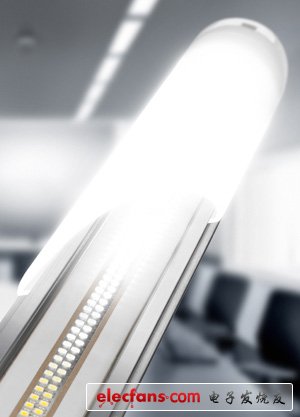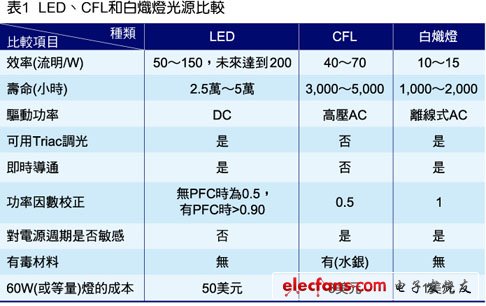In the past few years, display backlighting applications have been the main factors driving the growth of the light-emitting diode (LED) market. But now LED general lighting is becoming more and more attractive in the commercial and residential markets, which has further accelerated the growth of the LED market. According to the research report of market research organization LEDinside, commercial high-lumen LED lighting systems have experienced rapid growth in 2010. This is because for most consumers, home LED lighting is still too expensive. In contrast, for commercial areas such as parking lots, offices, factories, and warehouses, LED lighting can bring long-term benefits such as energy saving and environmental protection, and related tax reduction policies. Therefore, the use of LED lighting in these application areas will grow substantially.
Home LED lighting market will accelerate growth
LED lamps can not only replace high-pressure sodium lamps, halogen lamps and incandescent lamps, but also replace energy-saving fluorescent lamps (CFL) and fluorescent lamps in certain fields. LEDinside further believes that LED commercial lighting will grow rapidly and be widely adopted, and 2012 is a critical year for household LED lighting.

LED lighting can bring long-term benefits such as energy saving and environmental protection. Image source: OSRAM
In commercial buildings, lighting generally accounts for 25 to 40% of the total energy usage, so it is not surprising that commercial applications have begun to switch to LED lighting. Because such applications require high-intensity, long-term lighting, the economic return from saving electricity is relatively short-term. In addition, the long life of the LED accessory device greatly reduces the replacement cost of the LED lamp. The replacement cost includes not only the cost of the lighting fixtures, but also the labor cost of hands-on replacement, and usually in some applications, such as the disassembly of high-end lamp lighting applications, these require professional-level labor costs are very high.
Overall, from the perspective of most consumers, general-purpose household LED lighting is still too expensive, but in the future, as the price of LED accessory devices declines and LEDs are more widely available, the lighting market will also appear substantially in the residential sector. growing up. Most analysts expect that the residential market will accelerate growth after 2012.
LED driver IC design considerations
As mentioned earlier, the main driver behind the high growth rate of the LED lighting market is its ability to significantly reduce power consumption. If compared with incandescent lighting, providing the same amount of light output (in lumens), LED requires less than 20% of the electric power of incandescent lamps. As shown in Table 1, LED lighting has more advantages, but also more challenges. The advantages of LEDs include longer life than incandescent lamps, which greatly reduces the replacement cost; especially in the residential lighting market, the ability to use previously installed bidirectional silicon controlled rectifier (Triac) dimmers to dim LEDs is also a major advantage. The LED lamp can be turned on immediately, without the warm-up time like CFL, and the LED lamp is not sensitive to the power cycle, which is also different from the CFL lamp. In addition, the accessory device for LED lighting does not contain any toxic materials that need to be controlled or handled, and the CFL works with toxic mercury vapor. Finally, LEDs can achieve new and very flat form factors, which is not possible with other technologies.

These new LED lighting applications involve a very wide range, from 4 watt (W) screw-in replaceable incandescent light bulbs to 100W street lamps to high-bay lamps that require several hundred watts of power. Most of these LED lights need to rely on the existing alternating current (AC) offline power supply (depending on the geographical location of the terminal application, usually 90 to 265 alternating voltage (VAC) to work. To obtain high efficiency from the AC offline power supply The ability to drive LEDs has created some quite unique LED driver IC design challenges.
LED drivers must not only provide the highest efficiency to ensure power savings, but also provide electrical isolation for safety reasons. In addition, the LED driver must also provide power factor correction (PFC) and low harmonic distortion performance to adapt to a variety of applications. Not only that, in many residential applications, LED drivers must also provide the ability to dim with existing Triac dimmers. Finally, the solution must be cost-effective and the overall area must be small, so that the accessory device has enough space to accommodate the solution to attract commercial and residential users to replace the existing lighting with LED lights. All in all, there must be available LED driver ICs that can meet these requirements, which is critical to the popularization of LED lighting applications.
Led Wall Display,Outdoor Advertising Sign Banner,Advertising Digital Signs Banner,Outdoor Signs Banner
ALLIN , https://www.nbdisplayapio.com